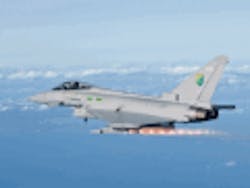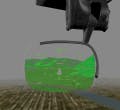Synthetic vision: road to credit
By Charlotte Adams Synthetic vision, a computer-generated depiction of the terrain and obstacles from the pilot's perspective, is coming into wider use in many aircraft -- from high-end business jets to workhorse helicopters. Although the technology has not yet received credit from the Federal Aviation Administration (FAA), it clearly increases situational awareness and reduces workload in the cockpit. Regardless of the weather or time of day, it is always visual flight rules (VFR) at noon on the synthetic vision display.
The resolution of the underlying database is better than 6 arc seconds worldwide although the whole visual image need not be of a uniform resolution, Evanschwartz explains. For terrain close to the aircraft, however, Pro Line Fusion displays support the higher resolution. Terrain is also color-coded. Although the infrared image will not be correlated with the synthetic picture and the flight guidance symbology on the PFD, the display can be divided vertically and the right half subdivided into two quarters which could present the infrared view, XM weather, overhead view of terrain, security camera view of landing gear, or other information. In this windowed format, the left half of the pilot's PFD would continue to display flight guidance and synthetic vision.


